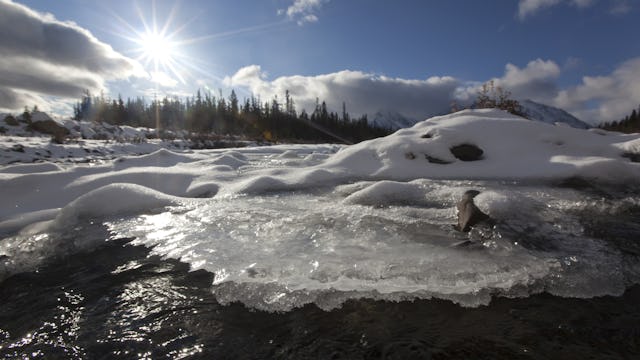Congrats to humanity for turning one environmental problem into a bunch more.


We’re now at risk of radioactive waste exposure thanks to melting permafrost
Permafrost covers nearly 25% of the Northern Hemisphere. But humans continue to pump greenhouse gases into the atmosphere, so the planet continues to warm, and permafrost becomes less permanent. That has the potential to cause us lots of problems. According to research published this week by the European Space Agency, the loss of permafrost could cause serious health threats, including the release of greenhouse gases, antibiotic-resistant bacteria, undiscovered viruses, and radioactive waste that has been trapped in the ground for centuries.
Here’s the deal with permafrost: While the ground only has to stay frozen for two years straight to get the label, much of it has been locked in a perpetual state of below freezing for up to a million years. Those freezing temperatures do more than just keep layers of Earth frozen: They also lock into place lots of the planet’s history, some of which has never been exposed to or touched by humanity.
According to the ESA’s research, deep permafrost — frozen ground that is at least three meters (about 10 feet) below the surface — has not been exposed to modern antibiotics. In fact, microorganisms sampled from deep permafrost in Siberia were found to be resistant to antibiotics. That means as that deep permatfrost thaws, it presents the risk of forming new strains of disease that we won’t have an immediate cure for. A worst-case version of this occurred in Russia in 2016, when an anthrax outbreak was believed to be caused by the thawing of tundra that had stored the bacteria for decades.
We know that threats sit just below the frozen surface. Earlier this summer, scientists identified 28 novel viruses that had been frozen in time for 15,000 years, locked in the ice of a glacier near Tibet. If you’re looking for the next global pandemic, it could be just below the surface, waiting for the planet to warm.
These aren’t the only threats being held by freezing temperatures. According to research published last month in the journal Nature, we could see the re-emergence of nuclear waste and radiation from Cold War-era weapons testing and nuclear submarines. The ice and soil near the Arctic, researchers found, have been holding onto that residual waste in the form of plutonium and radioactive cesium for decades.
And then, of course, there is methane and carbon dioxide. Permaforst does us the favor of holding onto harmful greenhouse gases and keep them from reaching the atmosphere. If that land thaws, those gases get released. Earlier this year, researchers found that the release of methane was actually creating explosive results and producing large craters in the Siberian tundra — showing the damage to the planet can be both immediate and long-term.
We need permafrost. It keeps us safe from disease, waste, and other health risks — including ones that we are responsible for producing. But this frozen layer of protection is disappearing at an alarming rate. The ESA warns that two-thirds of all near-surface permafrost could be gone by 2100. The planet can only protect us for so long, if we can’t protect it.